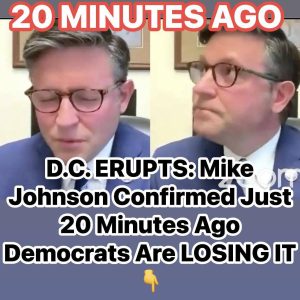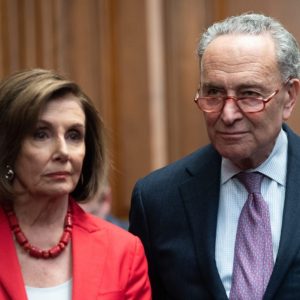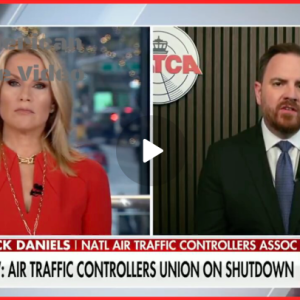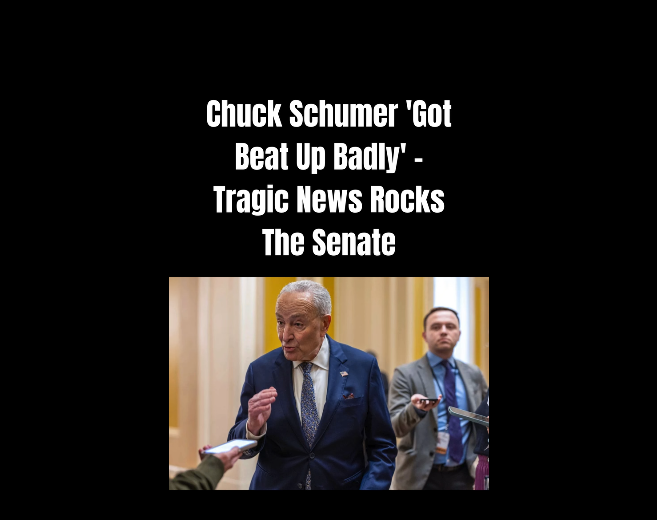Trump Ramps Up Pressure Over Shutdown, Health Insurance, and Senate Gridlock
After forty days of a partial federal government shutdown — the longest in modern U.S. history — Washington is showing the strain. What began as a dispute over short-term government funding has escalated into a high-stakes political standoff, with neither party signaling a willingness to back down. The Senate, locked in a stubborn deadlock, has failed repeatedly to pass a continuing resolution (CR) that would temporarily restore federal operations. Even the original CR, once viewed as a starting point for negotiations, now appears outdated as new issues have risen to the surface.
Growing Impacts Across the Country
As the shutdown drags on, its consequences are becoming increasingly visible. Air traffic delays have begun appearing in major metropolitan areas as staffing constraints ripple through transportation systems. Cargo shipments are slowing, affecting supply chains that depend on timely federal oversight and clearances. With Thanksgiving approaching, anxiety is building that travel disruptions could swell into a crisis.
Behind these immediate concerns lies a larger policy disagreement. A key sticking point involves enhanced Affordable Care Act (ACA) subsidies originally expanded during the COVID-19 pandemic. These subsidies are set to expire at the end of 2025 unless Congress votes to extend them. Senate Democrats have insisted that any government funding agreement include a one-year extension of the subsidies, arguing that allowing them to lapse would jeopardize access to affordable health coverage for millions of Americans.
Republicans, however, have criticized the subsidy expansion as an expensive pandemic-era practice that was meant to be temporary. They argue the country should return to pre-pandemic eligibility rules and debate long-term reform separately from immediate funding needs. The Senate has now voted more than a dozen times on various permutations of the CR, but nothing has cleared both chambers.
Mounting Frustration at the White House
President Donald Trump has grown increasingly vocal about the impasse. Throughout the weekend, he took to social media to express his frustration with both party leadership in the Senate. His posts reflected the broader mood in Washington, where lawmakers, staff, and federal workers are feeling the strain of a shutdown that shows no sign of ending.
In his messages, Trump sharply criticized the Senate’s inability to come together on an agreement, framing the standoff as harmful to the country and unnecessary. He accused Democrats of holding up government funding over a policy that, in his view, should not be tied to short-term operations. At the same time, Trump directed criticism toward Republicans who have defended the Senate’s procedural hurdles — particularly the reliance on the filibuster, which requires 60 votes to advance most legislation.
According to advisers, Trump has been pressing for more aggressive negotiation tactics and has privately expressed irritation that the Senate remains locked in procedural stalemates. He has argued that leadership should use every available tool to move a funding measure through the chamber, including bipartisan negotiation and, if necessary, structural adjustments to Senate rules.
A New Approach to Healthcare Policy
Trump’s commentary went beyond the shutdown itself. Reports over the weekend highlighted a policy idea he has been promoting internally for months: restructuring how government healthcare assistance is distributed. Under the concept he supports, instead of subsidizing insurance providers directly, the federal government would send assistance payments to individuals, who could then decide how and where to purchase coverage.
Proponents say such an approach could increase competition, reduce administrative overhead, and empower consumers with greater choice. Supporters also argue that direct-to-consumer assistance could reduce the influence of major insurance companies in federal healthcare markets.
Critics, however, raise concerns about whether such a system would maintain adequate protections for vulnerable populations. They warn that shifting away from structured subsidy systems could lead to gaps in coverage, unpredictable pricing, and uncertainty for people with chronic medical conditions. Health policy analysts note that proposals of this type require complex regulatory planning and bipartisan input to ensure long-term stability.President Donald Trump has grown increasingly vocal about the impasse. Throughout the weekend, he took to social media to express his frustration with both party leadership in the Senate. His posts reflected the broader mood in Washington, where lawmakers, staff, and federal workers are feeling the strain of a shutdown that shows no sign of ending.
In his messages, Trump sharply criticized the Senate’s inability to come together on an agreement, framing the standoff as harmful to the country and unnecessary. He accused Democrats of holding up government funding over a policy that, in his view, should not be tied to short-term operations. At the same time, Trump directed criticism toward Republicans who have defended the Senate’s procedural hurdles — particularly the reliance on the filibuster, which requires 60 votes to advance most legislation.
According to advisers, Trump has been pressing for more aggressive negotiation tactics and has privately expressed irritation that the Senate remains locked in procedural stalemates. He has argued that leadership should use every available tool to move a funding measure through the chamber, including bipartisan negotiation and, if necessary, structural adjustments to Senate rules.
A New Approach to Healthcare Policy
Trump’s commentary went beyond the shutdown itself. Reports over the weekend highlighted a policy idea he has been promoting internally for months: restructuring how government healthcare assistance is distributed. Under the concept he supports, instead of subsidizing insurance providers directly, the federal government would send assistance payments to individuals, who could then decide how and where to purchase coverage.
Proponents say such an approach could increase competition, reduce administrative overhead, and empower consumers with greater choice. Supporters also argue that direct-to-consumer assistance could reduce the influence of major insurance companies in federal healthcare markets.
Critics, however, raise concerns about whether such a system would maintain adequate protections for vulnerable populations. They warn that shifting away from structured subsidy systems could lead to gaps in coverage, unpredictable pricing, and uncertainty for people with chronic medical conditions. Health policy analysts note that proposals of this type require complex regulatory planning and bipartisan input to ensure long-term stability.
Targeting the Insurance Industry
Trump also directed pointed criticism at the insurance industry, echoing a sentiment that has grown among populist factions in both political parties: frustration with rising premiums and corporate consolidation. In one of his weekend statements, he criticized insurers for what he described as excessive profits and lack of transparency. While the language was forceful — characteristic of Trump’s public communication style — it reflected a broader debate within Washington about the future of healthcare financing.
Insurance industry groups responded cautiously, emphasizing the importance of stable, predictable funding structures to maintain coverage levels and prevent market disruption. Several organizations reiterated that sudden policy shifts could lead to premium volatility and administrative challenges.
Senate Divisions and the Filibuster Debate
Another theme running through Trump’s weekend comments was the Senate’s reliance on the filibuster, the procedural rule requiring 60 votes to advance most legislation. Although Republicans have traditionally defended the filibuster as a safeguard for minority-party rights, the shutdown has exposed internal divisions. Some Republican senators argue that the rule is preventing Congress from addressing urgent funding needs, while others maintain that keeping the filibuster in place protects the institution from hasty policymaking.
Trump’s criticism of the filibuster adds a layer of complexity for Senate Republicans, who must balance internal party dynamics with pressure from the White House. While Trump does not have direct authority over Senate procedures, his public commentary carries significant political weight within the party.
A Shrinking Window for Compromise
As the shutdown passes the 40-day mark, negotiators on Capitol Hill acknowledge that the situation is becoming more difficult to resolve. The longer the shutdown continues, the more issues accumulate: federal agencies report growing backlogs, contractors face financial strain, and uncertainty increases for families relying on government services.
Both parties insist that they are willing to negotiate, yet each accuses the other of refusing to compromise. Democrats say the subsidy extension is a matter of protecting public health. Republicans argue that tying the issue to a funding bill is inappropriate and creates unnecessary leverage.
At this point, neither side appears ready to make the first significant concession.
Conclusion
President Trump’s weekend remarks highlight the rising frustration surrounding the shutdown. His criticisms of Democrats, Senate procedure, and the insurance industry reflect broader political tensions that have been building for years. But amid the sharp rhetoric is an undeniable truth: the shutdown is inflicting real consequences on the country, and the political window for resolving it is narrowing.
Unless lawmakers find a path forward, the standoff is poised to grow even more disruptive — and the public pressure on both sides will only intensify in the weeks ahead.









